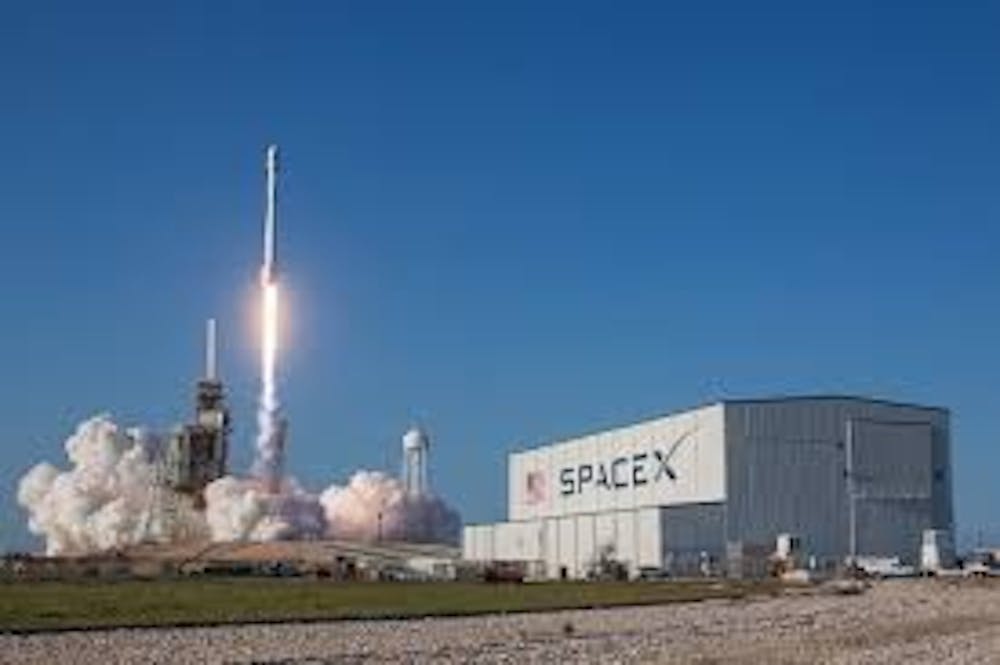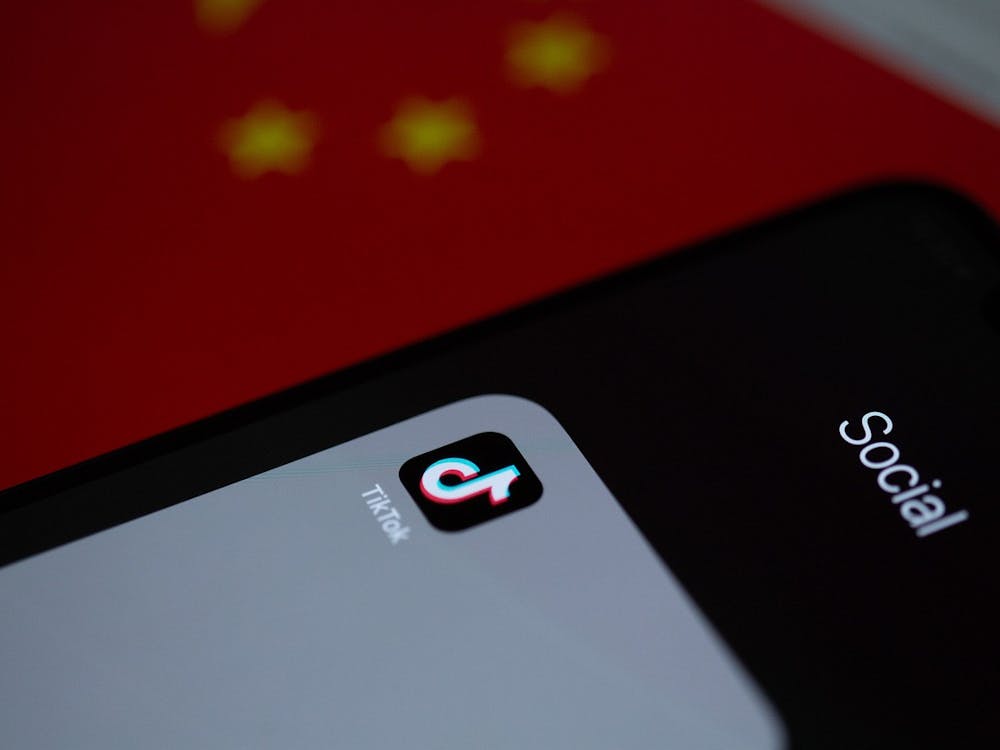In this feature, we explore how space science research has been and still is associated with both absurdity and great power competition. We delve into the roots of rocketry in war, the space race between the U.S. and the USSR, and what some consider to be the beginnings of a second space race between the U.S. and China. Through this piece, we hope to shed light on the nature of international competition and cooperation in space.
Aliens and Rivals
A month ago, Americans learned that the Pentagon spent several millions on a secret project to investigate UFOs. Former U.S. Senator Harry Reid, who spearheaded the effort, denied that he was “embarrassed or ashamed or sorry” for the project’s existence.
Around the same time, The Atlantic ran an article, “What Happens if China Makes First Contact?”, reporting on China constructing the largest radio astronomy telescope to search for alien life. A CNN article illustrated the relative sizes of telescopes, showing America to be two places behind China.
Commentators have started to wonder if a space race has been heating up between the two countries. In 2003 China became the third country after Russia and the U.S. to independently send a human to space. In 2016 it launched more rockets than Russia and as many as America. China hopes to send astronauts to the moon by 2036 and is shooting for Mars in the long-run.
Due to a sense of unease and supposed national security concerns, the U.S. banned China from the International Space Station (ISS), the American-led initiative that has welcomed scientists from countries ranging from South Africa to Malaysia.
In 2016 the Congressional Subcommittee on Space held the hearing “Are We Losing the Space Race to China?” According to Dennis Shea, chairman of the U.S.-China Economic and Security Review Commission, China’s gains in space may give the country economic, political and diplomatic benefits. One possibility is that increased innovation and job growth in the space industry could help China’s slowing economy pick up slack and transition to more sophisticated sectors.
In addition, the U.S. appeared to be lagging behind in its exploration of the cosmos. American astronauts have not left orbit since 1972, with no plans to return to the moon in sight and the ISS mission due to expire in 2024. But this may change with Trump’s Space Policy Directive 1, a formal order for NASA to prepare for another moon landing.
While it remains unclear whether Congress will assign the necessary funding to such projects, Trump seems interested in keeping American space technology great and sees potential military applications from its development.
“So we are the leader and we’re going to stay the leader, and we’re going to increase it many-fold,” Trump said at the signing of the directive.
First Encounters
It is perhaps symbolic that the first human-made objects launched into space traveled on the backs of modified V-2 rockets.
Developed by German scientists under the lead of aerospace engineer Wernher von Braun, the V-2 was a groundbreaking advancement in rocket technology. The first ballistic missile was launched vertically, angled mid-flight and followed a parabolic free-fall path to its target. Aside from its fearsome speed and range, the V-2 could reach heights of around 80 kilometers, or 50 miles, almost brushing the thermosphere.
Despite their late entry into World War II, V-2s killed over 2,000 civilians in Britain alone, taking the lives of tens of thousands of forced laborers during production. They failed to change the outcome of the war to the Nazi officials’ chagrin, but they were a powerful new technology, which both the United States and the Soviet Union were eager to acquire.
A Missile by Any Other Name
As the war in Europe drew to a close, the U.S. launched Operation Paperclip, which brought more than 1,600 German scientists and technicians to America, including Wernher von Braun and his team. Similarly, Operation Osoaviakhim, the Soviet parallel to Operation Paperclip, forcibly relocated several thousand scientists from the occupied Germany to Russia.
The U.S. and the USSR began utilizing German scientists’ experience, V-2 examples or parts, and designs. This gave rise to the first intercontinental ballistic missile (ICBM), the R-7, created by the engineer Sergei Korolev and his group. Improving upon the V-2’s range and the weight of payload capable of being carried, it successfully launched on August 21, 1957. The United States’ first ICBM was put up two years later.
However, while von Braun and Korolev were successful designers of missile weaponry, their passions lay in space.
Korolev had imagined the application of rocket technologies in space even in the early 1950s. When the United States publicly considered the idea of a satellite launch, Korolev was eager to point out to the Soviets of the potential prestige and other benefits if the USSR achieving this feat first.
In this Korolev would be successful. Sputnik 1, Earth’s first artificial satellite, launched in October of 1957, powered by a modified R-7 rocket. Sputnik 2, with a dog as its passenger, and Sputnik 3, bearing a variety of research instruments, were also sent up within the next 12 months.
The demonstration of Soviet technical ability famously sparked consternation in America about falling behind as a scientific power, in addition to fears about the possibility of the USSR having gained new weapon abilities that the U.S. could not match.
Onwards and Upwards
In the “space race” sparked by the United States’ announcement of its satellite ambitions, the V-2 would continue to be a significant influence. In fact, the V-2 influenced the design of America’s Redstone rockets, also developed by Wernher von Braun and his team.
Originally designed as Army ballistic missiles, Redstones powered the successful launch of Explorer 1, America’s first satellite, as well as the Mercury-Redstone launch vehicles, which carried the first American into space. Von Braun’s team further developed the Jupiter rockets, a derivative of the Redstone, as well as the Saturn V rocket, which powered the Apollo 11 mission that landed Americans on the moon.
Throughout the entire endeavor, the Soviet Union was also continuing to develop their space program, which owed much to the efforts of Sergei Korolev. Both countries tested rockets and launched satellites and craft at a breakneck pace, watched avidly by the news media and populations of both nations. Both countries vied for firsts that could be used as examples to justify technical and, by implication, economic, military and political primacy.
(Enough) Space for All
The militarization of space has not stopped since the end of the Cold War. In the waning months of 2017, Congress and the Pentagon were battling over the idea of a U.S. Space Corps, a new uniformed service within the Air Force. In August, the U.S. House of Representatives approved legislation that called on the Department of Defense to create this service. The bill’s bipartisan supporters claimed that the Pentagon did not put a high enough priority on the security of space.
Although the bill was eventually scrapped by Congress, it once again raised the issue of space as a potential battlefront.
The first space race between the U.S. and USSR might have reached its end, but with China’s out-of-atmosphere capabilities seemingly growing each year, as well as the increased privatization of the space industry through companies like SpaceX and Virgin Galactic, a new and different space race may be developing.
As China continues to expand its reach in space, the final frontier could become a higher priority for the U.S. And with the private sector possibly providing more efficient solutions to spaceflight’s most expensive challenges, the door is open for the U.S. to enter into another space race.
Yet while there is great mistrust between the U.S. and its potential rivals, there is cause for optimism. Space science is best known for some of the most cinematic moments of Cold War competition, but it was also a remarkable foothold for diplomacy in the years of reconciliation.
Just as ping pong helped pave Nixon’s road to China, events like the Apollo-Soyuz mission and collaboration over the ISS were part of warming relations with the Soviets. Similarly, China’s new telescope could contribute to international collaboration over extraterrestrial research. While Chinese astronomers will have priority in the use of China’s new telescope for the next two or three years, it is expected to be open to international access after that.
From V-2s to the space race to the search for alien life, space has been our uncertain frontier. As international tensions rise, this uncertainty shows no sign of receding. At the same time, we look to science and space’s great ability to inspire cooperation and humility in order to reach new heights.
















Please note All comments are eligible for publication in The News-Letter.